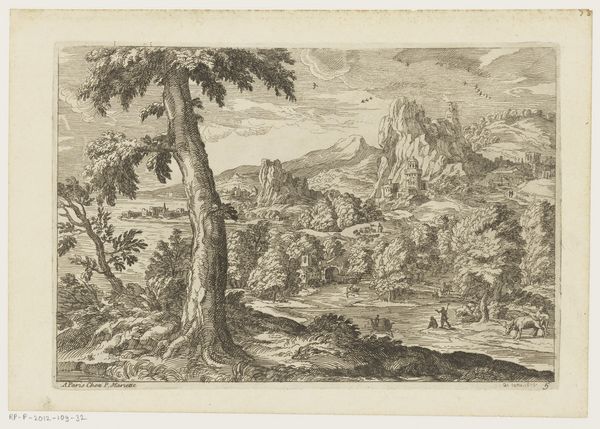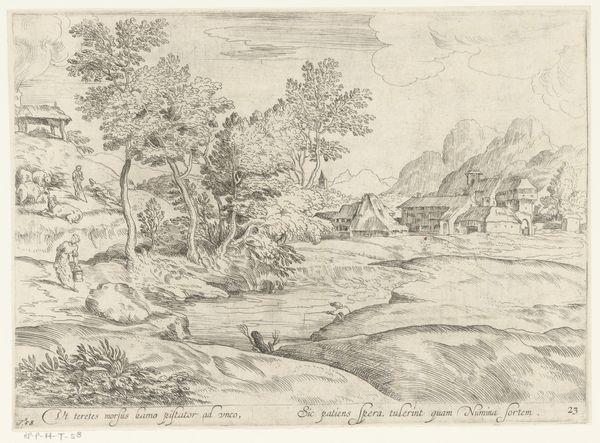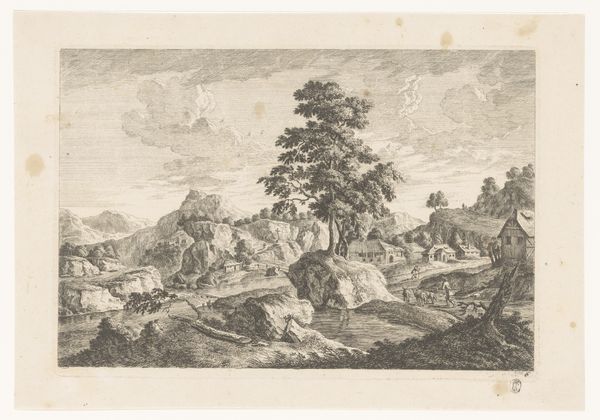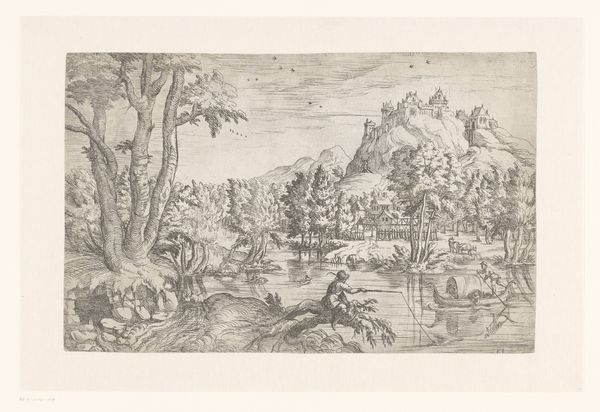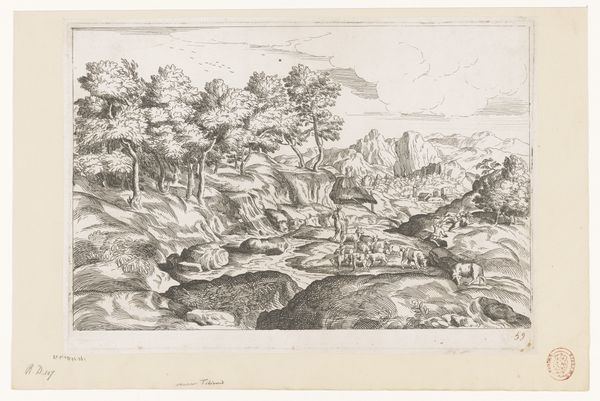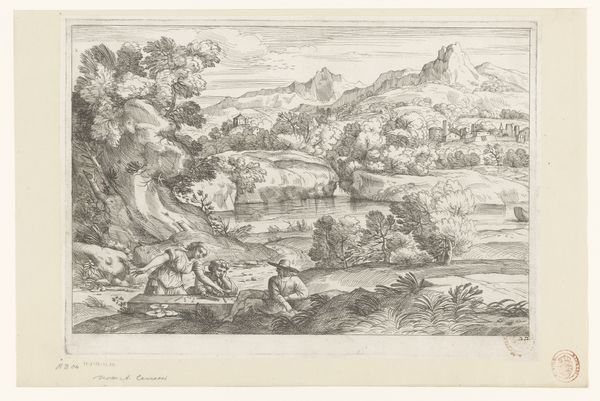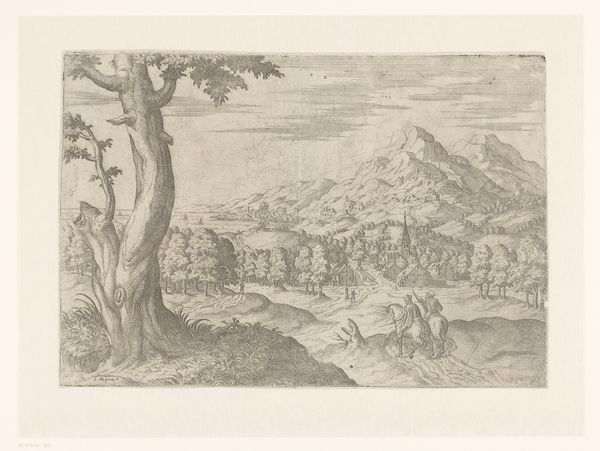
drawing, print, etching, engraving
#
drawing
# print
#
etching
#
landscape
#
river
#
mannerism
#
engraving
Dimensions: height 308 mm, width 428 mm
Copyright: Rijks Museum: Open Domain
Editor: This is "Panoramisch landschap met grote boom," or "Panoramic landscape with large tree," an etching by the Monogrammist DB from around 1560-1580. It's currently held at the Rijksmuseum. I find the vastness of the landscape a little overwhelming. What historical contexts shape your understanding of this piece? Curator: This landscape reflects a pivotal moment when European artists were grappling with representing not just the observable world, but also their internal, emotional responses to it. The exaggerated rock formations, the almost theatrical staging of nature… it all speaks to Mannerism's break from the Renaissance's more measured naturalism. Editor: Mannerism feels like a good descriptor here! It definitely veers from realism. How might contemporary viewers connect to such a seemingly distant style? Curator: Think about the ongoing human struggle to define our relationship with nature, even today. Then, consider the legacy of colonialism encoded within landscape art. Early landscapes frequently omitted Indigenous presence or subtly asserted European dominance over newly “discovered” territories. Can we look at this work critically, questioning whose perspective is privileged here, and how the land is being depicted? Editor: I see what you mean about perspectives now, especially given that a single tree has a powerful position in the foreground, and perhaps even blocking our views. I never considered that it may represent an intentional imbalance of power! I never thought of landscape art as political before. Curator: It is important to interrogate these older pieces using our contemporary lens and ask critical questions. It helps to view older art beyond face value to engage with our ever-evolving ideas of society, identity, and art history. Editor: This really changes how I'll look at landscape art from now on. Curator: Exactly. Hopefully it prompts you to ask more questions, looking into issues like ecology, labor, and representation when assessing art of all ages.
Comments
No comments
Be the first to comment and join the conversation on the ultimate creative platform.
